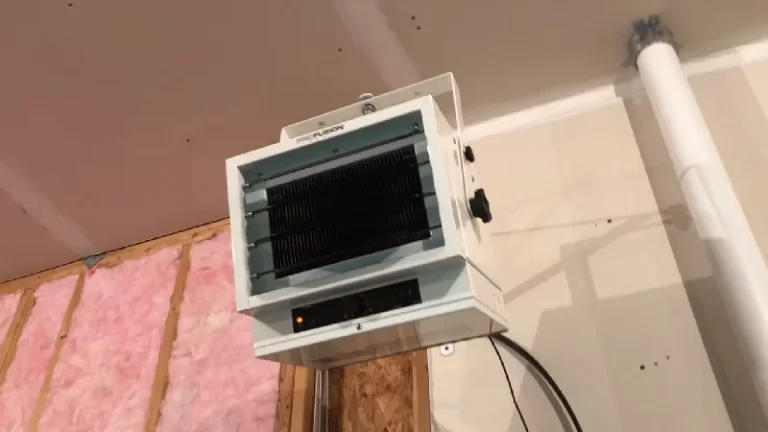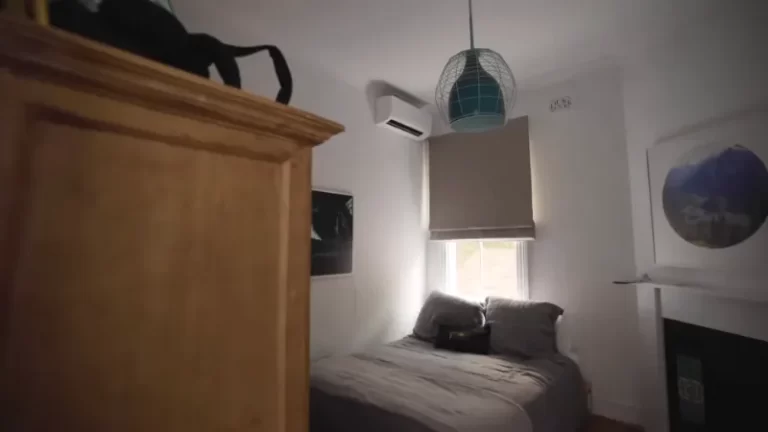Attic Fan Vibration: Causes, Fixes, and How to Reduce Noise Effectively
That low, persistent hum. The subtle, house-shaking rattle. If you’re experiencing attic fan vibration, you know it’s more than just a minor annoyance. It’s a disruptive noise that can permeate your entire home, turning a device meant for comfort into a source of constant irritation. But you don’t have to live with it. That vibration is your fan’s way of telling you something is wrong, and ignoring it can lead to bigger problems down the line.
An attic fan is a crucial component of your home’s ventilation system, working tirelessly to expel hot, moist air. This process protects your roof structure, lowers your energy bills, and makes your living space more comfortable. When it starts to vibrate, however, it signals a loss of efficiency and a potential for mechanical failure. This comprehensive guide will walk you through identifying the root causes of that disruptive shaking and provide actionable, step-by-step solutions to restore peace and quiet to your home.
You'll Learn About
Why Is My Attic Fan Vibrating? Uncovering the Common Culprits
Understanding the source of the vibration is the first step toward fixing it. An attic fan is a relatively simple machine, but several issues can throw it off balance and create that tell-tale rattle or hum. From simple maintenance oversights to more serious mechanical failures, let’s explore the most common reasons your fan is shaking.
1. Unbalanced Fan Blades: The Number One Cause
By far, the most frequent reason for attic fan vibration is imbalanced blades. Over time, an accumulation of dust, dirt, and grime on the fan blades can become unevenly distributed. This might not seem like much, but the high rotational speed of the fan amplifies even the slightest weight difference, creating a significant wobble that translates into vibration.
Additionally, blades can become bent or damaged from debris getting into the attic or from being mishandled during installation or maintenance. A warped or damaged blade disrupts the fan’s rotational harmony, leading to noisy and inefficient operation.
2. Loose Components and Mountings
Constant operation can cause screws, bolts, and other fasteners to loosen over time. This includes the screws holding the blades to the motor hub, the bolts securing the motor to its mounting bracket, and the hardware fastening the entire fan assembly to your roof rafters or gable wall.
When any of these components are loose, they allow for excess movement, which manifests as a rattling or vibrating noise that can reverberate through your home’s structure. Improper installation from the start is also a major contributor; if the fan wasn’t securely leveled and fastened, vibration is almost inevitable.
3. Motor and Bearing Issues
The motor is the heart of your attic fan. As it ages, its internal components, particularly the bearings, can wear out. Bearings are what allow the motor shaft to spin smoothly. When they become worn, lubrication dries up, or they get infiltrated by dust, they create friction.
This friction can lead to grinding, screeching, or humming sounds, accompanied by significant vibration. In some cases, the motor itself might be nearing the end of its lifespan, struggling to operate and causing the entire unit to shake. An overheating motor is a serious sign of failure and a potential fire hazard.

4. Obstructions and Debris
Your attic can be a dusty place, and it’s not uncommon for debris to find its way into the fan’s housing. Leaves, twigs, insulation material, or even pests’ nests can get caught in the fan assembly, obstructing the blades’ path.
This not only creates a lot of noise but can also damage the blades and throw the entire unit off balance, causing severe vibration. Regular inspection and cleaning are key to preventing this issue.
Your Step-by-Step Guide to Fixing Attic Fan Vibration
Now that you understand the potential causes, it’s time to roll up your sleeves and tackle the problem. Follow these steps methodically to diagnose and resolve the vibration issue. Safety is paramount: always turn off the power to the attic fan at the circuit breaker before beginning any inspection or repair work.
Step 1: A Thorough Visual Inspection
Your first task is to get a good look at the fan. Access your attic safely, ensuring you have stable footing and adequate lighting. If your access involves a ladder, you might want to learn how to replace attic ladder hinge arms to ensure its stability.
Look for any obvious issues. Are there visible accumulations of dirt on the blades? Do you see any debris caught in the housing? Check for loose screws on the fan’s housing and mounting brackets. Gently try to wiggle the entire fan assembly; if it moves easily, you’ve likely found a source of the problem.
Step 2: Cleaning the Fan Blades
If the blades are dirty, cleaning them is your next move and often the most effective solution. Use a damp cloth or a vacuum with a brush attachment to carefully clean each blade, removing all dust and grime.
Ensure you clean them as evenly as possible to avoid creating a new imbalance. While you’re there, clean the fan housing and motor casing to prevent future dust buildup and help the motor run cooler.
Step 3: Tighten All Fasteners
With a screwdriver and a wrench, systematically go through and tighten every visible screw and bolt. Start with the screws holding the blades to the motor. Then, check the bolts that secure the motor to its mount.
Finally, confirm that the mounting brackets are firmly secured to the attic’s structural framing. Don’t overtighten, as this can strip the screws, but ensure everything is snug and secure. Even a slightly loose connection can be a major source of vibration.
Step 4: Checking and Balancing the Blades
If cleaning and tightening didn’t solve the problem, the blades themselves may be unbalanced. First, inspect each blade for signs of damage, like bends or cracks. If a blade is significantly damaged, it will need to be replaced.
To check for balance, you can use a blade-balancing kit, often available at home improvement stores. These kits include a clip and small, self-adhesive weights. Attach the clip to the middle of one blade and turn the fan on briefly to see if the vibration lessens or worsens. Move the clip along the blade and test it on other blades until you find the spot where the vibration is minimized. Once you’ve identified the light blade, stick one of the adhesive weights onto the top center of that blade, opposite the clip’s position, to correct the imbalance.
Step 5: Inspecting the Motor and Bearings
Listen closely to the motor while the fan is running (from a safe distance). If you hear grinding, squealing, or a loud humming, the issue is likely internal to the motor. Turn the power off again and, once the fan has stopped, try to spin the blades by hand.
If they don’t spin freely or you feel resistance and hear a grinding noise, the motor bearings have likely failed. Some older motors have ports for lubrication, and adding a few drops of machine oil can sometimes solve the problem. However, most modern fans use sealed bearings that cannot be lubricated and will require the motor to be replaced if they fail.
Preventative Maintenance: Keeping Your Attic Fan Quiet
The best way to deal with attic fan vibration is to prevent it from happening in the first place. A simple routine of annual maintenance can extend the life of your fan and ensure it operates smoothly and quietly for years to come.
- Annual Cleaning: Once a year, before the hot season begins, perform a thorough cleaning of the fan blades and housing to prevent unbalanced buildup.
- Inspect Fasteners: During your annual cleaning, take a few extra minutes to check and tighten all mounting hardware and blade screws.
- Check for Obstructions: Ensure the area around the fan is clear of insulation, stored items, and any other debris that could be drawn into the unit.
- Listen Regularly: Pay attention to the sound of your fan. If you notice a change in its tone or the emergence of a new noise, it’s a sign to investigate before a small issue becomes a big one. This is similar to how a radon fan can become loud in the cold, indicating a potential problem.
| Problem Symptom | Likely Cause | Solution | Difficulty Level |
|---|---|---|---|
| Low hum and steady vibration throughout the house | Dirty, unbalanced fan blades | Turn off power, thoroughly clean all blades | Easy |
| Rattling or clicking noise that gets worse at high speeds | Loose mounting bolts or blade screws | Turn off power, tighten all fasteners | Easy |
| Scraping or clanking sound | Bent blade or obstruction in the fan housing | Turn off power, inspect for and remove debris, straighten or replace bent blade | Moderate |
| Loud grinding, squealing, or buzzing from the motor | Worn-out motor bearings | Lubricate if possible; otherwise, motor replacement is necessary | Difficult (Pro Recommended) |
| Vibration is so strong it causes other items to rattle | Improper installation or severe imbalance | Re-secure the fan mounting, balance the blades with a kit | Moderate to Difficult |
When to Call a Professional
While many causes of attic fan vibration can be addressed with basic DIY skills, there are times when it’s best to call in a professional. If you’re dealing with electrical issues, such as a faulty motor or wiring, it’s safest to hire a qualified electrician.
Motor replacement can also be a complex task and is often best left to an HVAC technician or handyman. Furthermore, if you’ve tried all the troubleshooting steps and the vibration persists, an expert can provide a more thorough diagnosis. The cost of a professional repair, which can range from around $100 to over $500 depending on the issue, is often a worthwhile investment for safety and peace of mind. Sometimes, severe vibrations can even be a symptom of larger structural issues, such as recent roof work causing cracks in the ceiling after a new roof installation, which definitely warrants a professional look.
Living with attic fan vibration is not something you have to tolerate. By systematically identifying the cause—whether it’s as simple as dirty blades or as complex as a failing motor—you can take clear, effective steps to silence the noise. A quiet, smooth-running attic fan is not just more pleasant; it’s a sign of a well-maintained, efficient home. Take the time to address the vibration today and enjoy a cooler, quieter home tomorrow.


